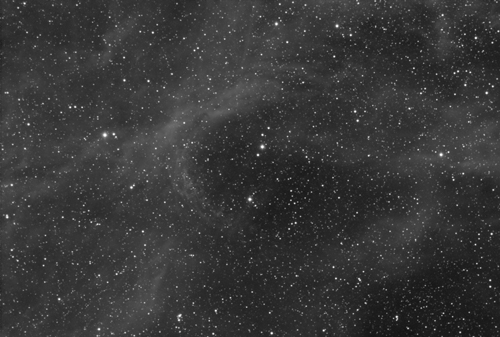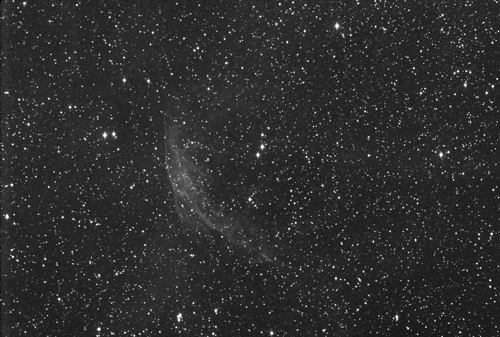© 2021 Michael A. Siniscalchi
WR 134
Variable Wolf-Rayet star in Cygnus
RA: 20h 10m 14s Dec: +36° 10m 35s, Distance: ~6000 ly, Size:50 ly
Above is the starless version showing the star WR134
Mouse over for the full star version.
Click on image for larger size.
From Wikipedia
WR 134 is a variable Wolf-Rayet star located around 6,000 light years away from Earth in the constellation of Cygnus, surrounded by a faint bubble nebula blown by the intense radiation and fast wind from the star. It is five times the radius of the sun, but due to a temperature over 63,000 K it is 400,000 times as luminous as the Sun.
WR 134 was one of three stars in Cygnus observed in 1867 to have unusual spectra consisting of intense emission lines rather than the more normal continuum and absorption lines. These were the first members of the class of stars that came to be called Wolf-Rayet stars (WR stars) after Charles Wolf and Georges Rayet who discovered their unusual appearance.
WR134 Ha (Hydrogen Alpha)
This object looks best without stars so as to reveal the delicate OIII ring structure. I found this color pallet best displays contrast between the ring (mainly OIII) and other areas that contain OIII which are surrounded by Hydrogen (Ha) and Sulfur (SII).
StarNet was used to remove the stars before stretching the individual frames. Being starless allowed the fainter ring structure and other areas in the OIII layer to come through without over stretching the stars.
Below are the individual frames with an initial linear stretch



